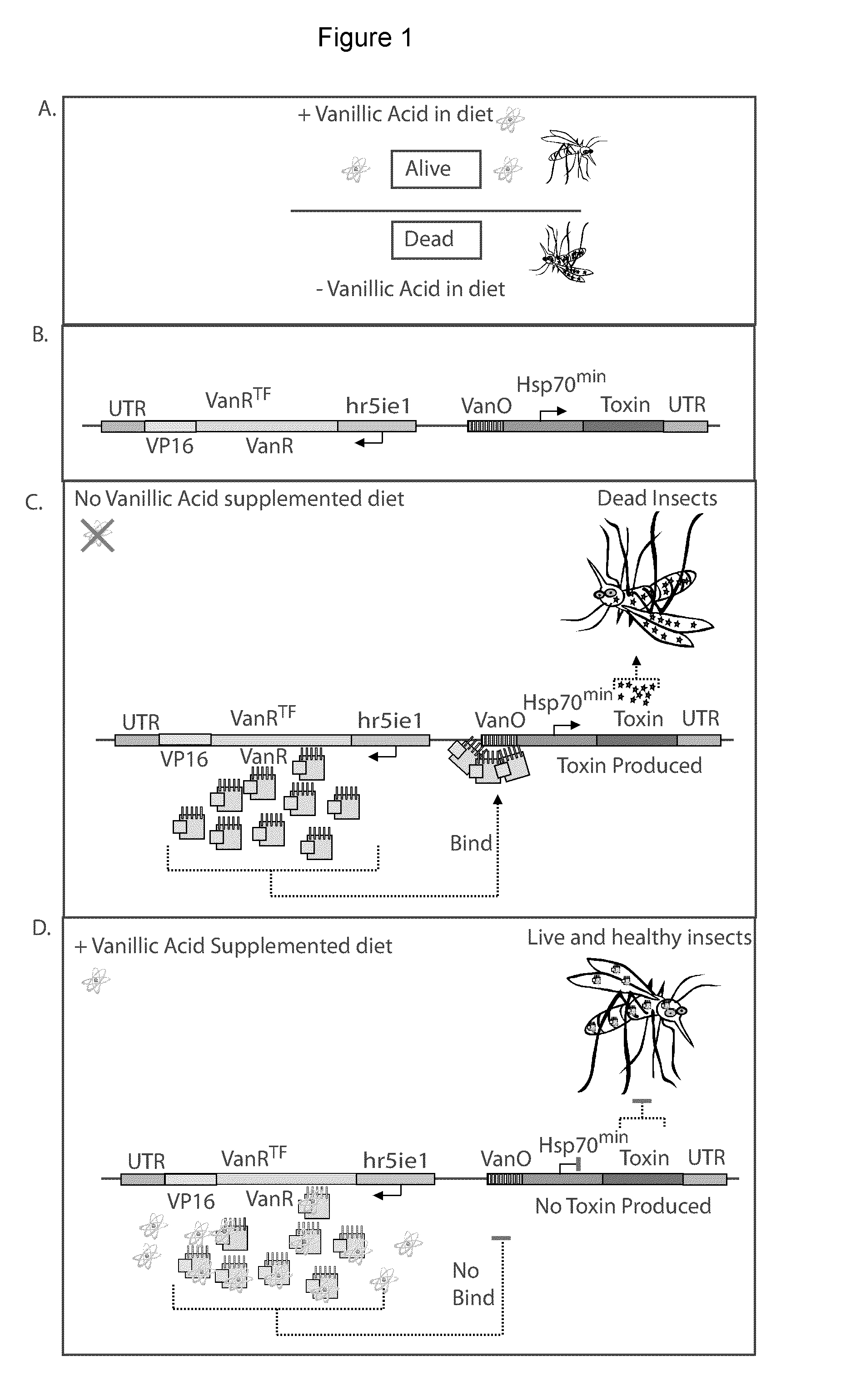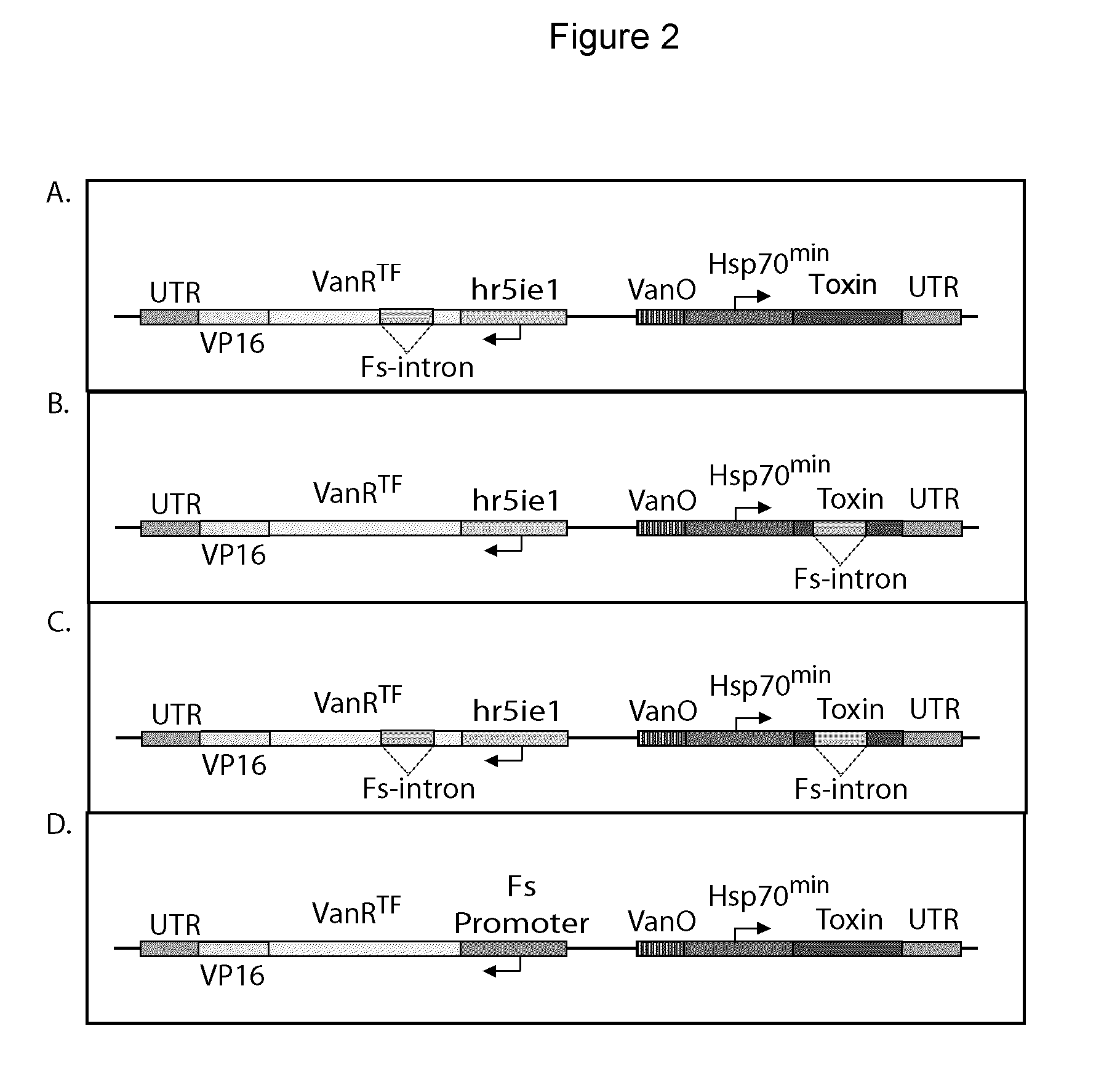Repressible lethal system for regulating insect populations
a technology of insect populations and lethal injection, which is applied in the field of lethal injection system for regulating insect populations, can solve the problems of not being able to solve, not being able to cheaply and environmentally friendly to blanket crops with insecticides, and not being able to achieve the effect of reducing the number of insecticides
- Summary
- Abstract
- Description
- Claims
- Application Information
AI Technical Summary
Benefits of technology
Problems solved by technology
Method used
Image
Examples
example 1
Construction of VanDal System
[0071]To engineer a dominant vanillic acid-repressible lethal system (VanDal system), a plasmid was constructed, in which the C-terminus of VanR was fused with the Herpes simplex virus transactivation domain VP16, generating a chimeric transcription factor (vanRTF) (as descried in Hagmann et al., 1997). The chimeric transcription factor VanRTF was driven at high levels, in a ubiquitous pattern, using a baculovirus immediate early (iel) promoter separated by a baculovirus enhancer (hr5) (as described in Bossin et al., 2007). On the same plasmid, but facing in the opposite direction, VanO operator sequences were placed upstream of the P_hsp70min promoter (as described in Amin et al., 1987), and the P_hsp70min promoter drove the expression of toxin VP16. The vanillic acid-repressible lethal system resides in a single piggyback transposable element that also includes a positive selection marker gene, (Opie2-dsRed), to facilitate the identification of transge...
example 2
Evaluation of VanDal System in Biological Control
[0073]In this example, in vivo functionality of the VanDal system prepared according to the general procedure of Example 1 was evaluated in Drosophila melanogater, an insect model organism. Healthy transgenic lines that only survive when fed a diet supplemented with a low dose vanillic acid were established. To simulate a release into the wild, two crosses in the absence of vanillic acid were set up: 1) homozygous VanDal males mated separately to wildtype virgin females and 2) homozygous Vandal females mated separately to wildype males. In both cases no surviving progeny were produced, resulting in a collapse of the population as expected.
[0074]In at least some of the previously described embodiments, one or more elements used in an embodiment can interchangeably be used in another embodiment unless such a replacement is not technically feasible. It will be appreciated by those skilled in the art that various other omissions, addition...
PUM
| Property | Measurement | Unit |
|---|---|---|
| size | aaaaa | aaaaa |
| resistance | aaaaa | aaaaa |
| temperature | aaaaa | aaaaa |
Abstract
Description
Claims
Application Information
 Login to View More
Login to View More - R&D
- Intellectual Property
- Life Sciences
- Materials
- Tech Scout
- Unparalleled Data Quality
- Higher Quality Content
- 60% Fewer Hallucinations
Browse by: Latest US Patents, China's latest patents, Technical Efficacy Thesaurus, Application Domain, Technology Topic, Popular Technical Reports.
© 2025 PatSnap. All rights reserved.Legal|Privacy policy|Modern Slavery Act Transparency Statement|Sitemap|About US| Contact US: help@patsnap.com



